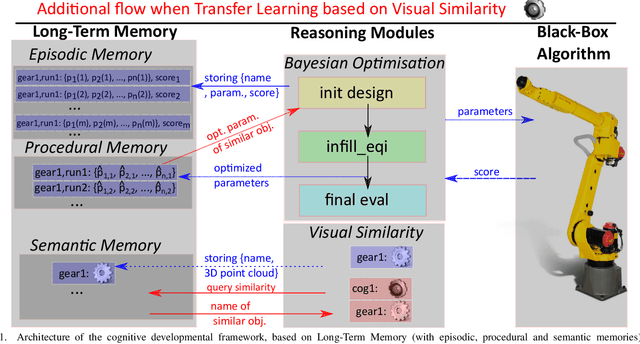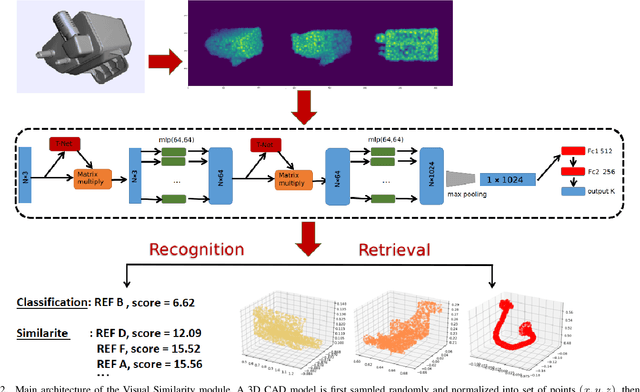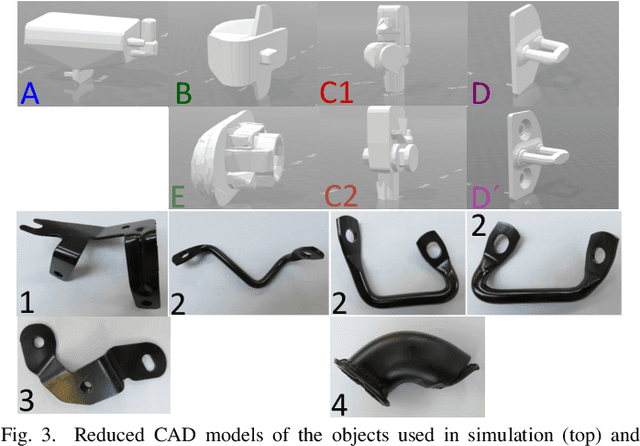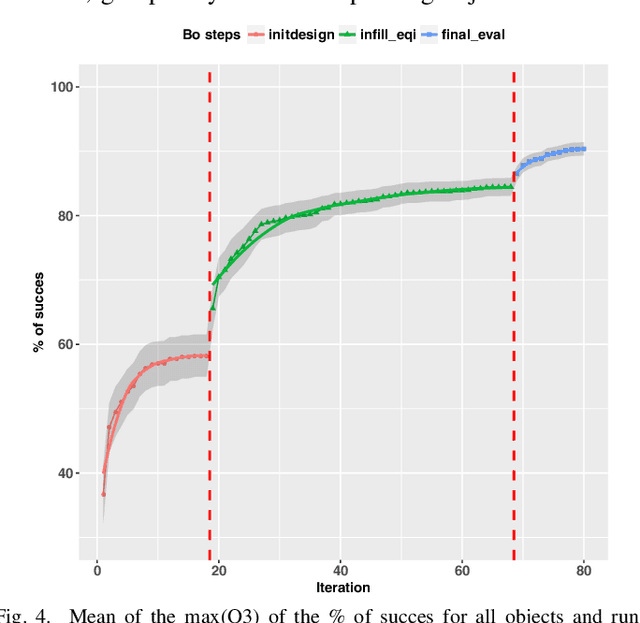Developmental Bayesian Optimization of Black-Box with Visual Similarity-Based Transfer Learning
Paper and Code
Oct 19, 2018



We present a developmental framework based on a long-term memory and reasoning mechanisms (Vision Similarity and Bayesian Optimisation). This architecture allows a robot to optimize autonomously hyper-parameters that need to be tuned from any action and/or vision module, treated as a black-box. The learning can take advantage of past experiences (stored in the episodic and procedural memories) in order to warm-start the exploration using a set of hyper-parameters previously optimized from objects similar to the new unknown one (stored in a semantic memory). As example, the system has been used to optimized 9 continuous hyper-parameters of a professional software (Kamido) both in simulation and with a real robot (industrial robotic arm Fanuc) with a total of 13 different objects. The robot is able to find a good object-specific optimization in 68 (simulation) or 40 (real) trials. In simulation, we demonstrate the benefit of the transfer learning based on visual similarity, as opposed to an amnesic learning (i.e. learning from scratch all the time). Moreover, with the real robot, we show that the method consistently outperforms the manual optimization from an expert with less than 2 hours of training time to achieve more than 88% of success.
 Add to Chrome
Add to Chrome Add to Firefox
Add to Firefox Add to Edge
Add to Edge